Cambodia Travel Basics
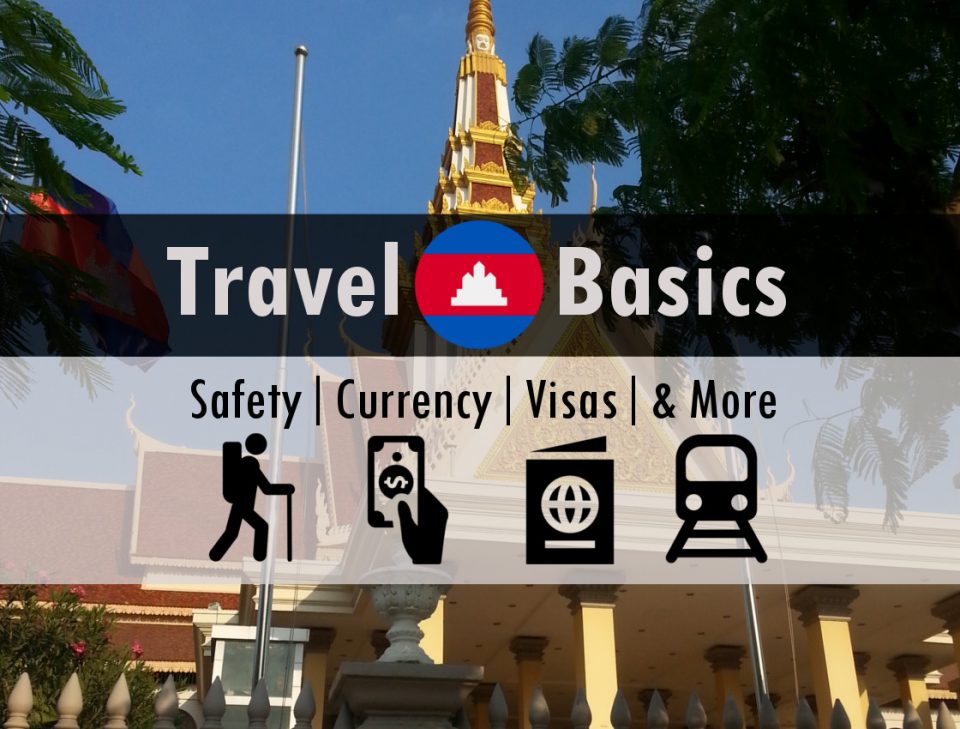
So you’re thinking of backpacking Cambodia? Wondering how much it’ll cost you? Is it safe to travel alone? Where should you go? What’s the weather like? And how to get around? Cambodia is still an underrated travel destination, but well established for backpackers. There is so much to learn and enjoy from the food & culture, to the rugged untamed nature and incredibly rich history. Cambodia is home to the largest religious monument in the world, Angkor Wat, which is surrounded by an additional 1200 temples and once had the largest population of any city on earth.
From day one, I had emotional highs and lows: Anger, stress and terror to amazement, wonder and heartache. Looking back all these months later I still get emotional thinking about this beautiful country filled with rich ancient history. The kind smiles of the local villagers and playful children. And morosely I will never forget the darkness of unspeakable horrors from a chapter of the cold war era. If you are interested in visiting Cambodia, I seriously recommend watching a few documentaries or picking up a book on amazon.com. Fair warning, the content can be horrific and gruesome on the subject of the Khmer Rouge. While the Angkor documentaries are stunning and among my all time favorites!
To make things easier for you, here are the basics you should know for traveling Cambodia.
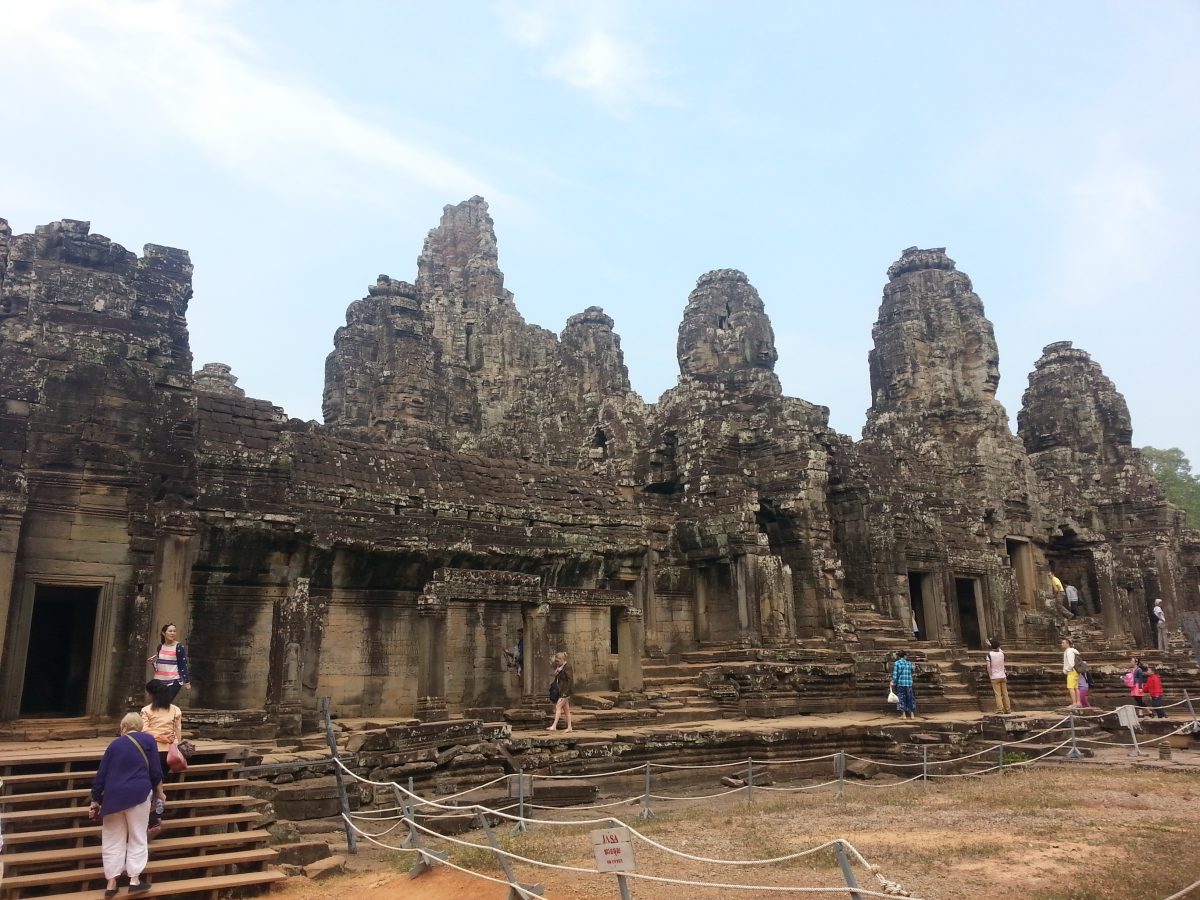
The Cost to Travel Cambodia
Over 7 long days of sobering reflection in Phnom Penh and marvelous discovery in Angkor, I spent under $250 USD! Imagine a once in a lifetime adventure to ancient temples and modern age museums for less than the price of a flat screen TV. There is so much to enjoy even on a small budget. Most noteworthy is Cambodia’s fairly extensive selection of Beer thanks to some new micro craft breweries and a partnership with Carlsberg. As a result, Draft Beer can be found for as low as 0.70 to 1.25 per beer. Above all else, the food isn’t expensive and delicious! Truly one of my favorite parts of exploring a new culture and country!
Of note, the buses between cities range from $5 to as high as $19 depending on the end destination (within Cambodia or across borders). While all day Tuk-Tuk Taxis start at $13/day or $1-$3 for a short trip. However, my favorite method of getting around is by bike for $1-$3/day with a helmet included. Expect to pay $10-$12 on off-days and $15-$30 on party and excursion days.
| Fixed Costs | USD | |
| Cambodian Visa | $35 | |
| Day Angkor Pass (1 & 3 day) | $20 | $40 |
| Tickets to Tuol Sleng & Killing Fields (With Audio) | $6 | |
| Variable Costs | Low | High |
| Accommodation/Night (6 Person Dorm & Private Room) | $2 | $15 |
| Food & Drinks/Meal | $2 | $6 |
| Bus/Trip | $5 | $20 |
| Tuk-Tuk Tour/Day | $13 | $25 |
Test out the Market
TIP: Ask you hostel staff what is the going price of a fruit, choose a fruit, any fruit. I chose dragon-fruit or jackfruit because I really like it and its easy to spot from far away since its bright pink. When you enter a market and want to buy fruit for the day, you will have a reference point for the merchant’s quote.
Now you can assume the price of most goods are doubled or tripled for tourists. What you do with this information is up to you. But don’t be fooled by the local currency being US Dollars, $1 USD buys a lot in Cambodia. Many tourists complain about feeling ripped off by the locals, well its your responsibility to find out how much things actually cost!
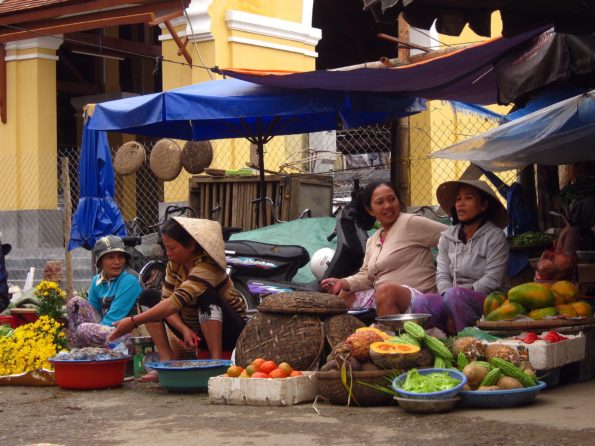
The Currency – US Dollars (USD) & Cambodian Riel (KHR)
This is so important! You spent all those months saving for your trip, so lets get familiar with the local currency before you spend it. Cambodia has an official currency called the Cambodian Riel that trades at 4000 to $1 USD. But unofficially the country uses the US Dollar for almost everything.
ATMs dispense US Dollars when cash is withdrawn using foreign credit cards, but locals will often give you change in the local RIels. For example, is a fruit costs 1000 Riels, give $1 USD and the merchant will give you back 3000 Riels. No US coins are used in Cambodia so all small change is in Riels.
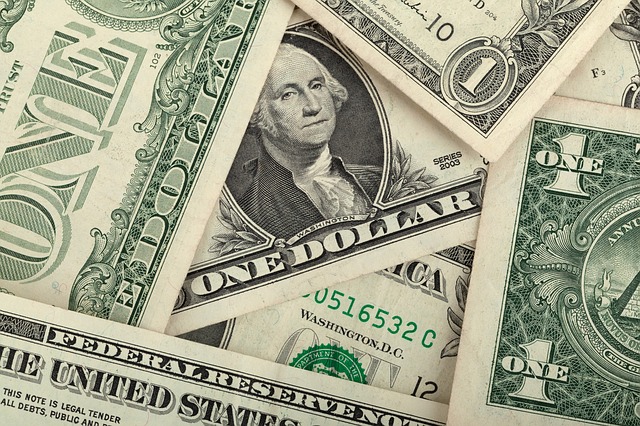
If you aren’t American, download the Currency Exchange App ‘Xe‘ on your phone, it will update when connected to the internet and keep the latest rates for many currencies stored on the app for offline use. For other money saving apps check out this post.
Historic Note: Incredibly, the Riel was actually re-established in 1980 thanks to the Communist Vietnamese Army that liberated Cambodia from the Khmer Rouge. From 1975 to 1980, The KR completely abolished the use of money in Cambodia!!! Imagine that, no money!! The new Cambodian government of 1980 had to give away the money to the common people in order to reintroduce a currency to the economy. This is wild stuff! Okay, maybe i’m a little too excited here, but you get the idea that this is never happens!
Cambodia is Safe to Travel
Safety should always be a point of concern for travelers when choosing the next vacation or backpacking destination. I recommend check out the International SOS Map Website for an overview of travel risk across countries. The map has different ratings for Medical Risk, Security Risk and Road Safety Risk.
The best resources for accessing the safety of a country are your country’s embassies! You should check out the physical location of your embassy in the country or if there isn’t one, another embassy that accepts you. For example, the US Embassy will likely help Canadian Citizens if there isn’t a Canadian Embassy available.
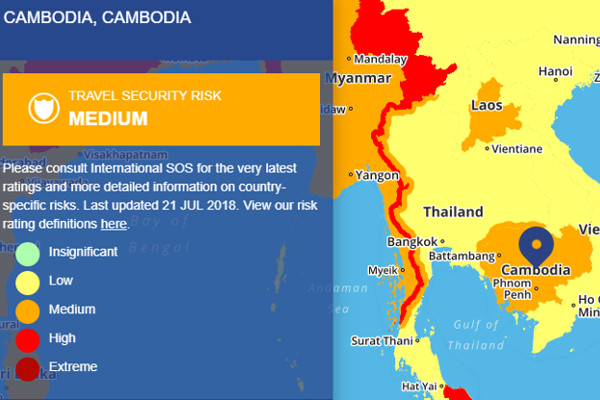
Embassy Websites
- The US Department of State – Bureau of Consular Affairs has Cambodia Ranked as “1 – Exercise Normal Precautions”. The safest rating.
- The Government of Canada – Public Health Agency has Cambodia Ranked as “Exercise a high degree of caution”. The second safest rating, due to some traces of the Zika Virus.
- France Diplomatie – Outlines some of the specific risks in Cambodia about Hangbag theft in Phnom Penh and wearing a helmet if on a scooter.
- Australian Government – Department of Foreign Affairs and Trade has Cambodia ranked as “Exercise normal safety precautions”. The safest rating,
I’m not going to list them all, you can certainly find your own government website in google. Take the American Travel Risk Rating as an excellent reference as well. They keep information updated regularly for each country
Vietnam Visa Application
Go to your Government Website that you know is real and find the links to the Official Cambodia Government Pages. I use the US Department of State Website which has links to the Cambodia Ministry of Foreign Affairs E-Visa page listed below.
There are a lot of fake E-Visa or VOA Services online for Cambodia, which will send you a fake document and steal your information (Like Passport Number & Name). Which is terrible.
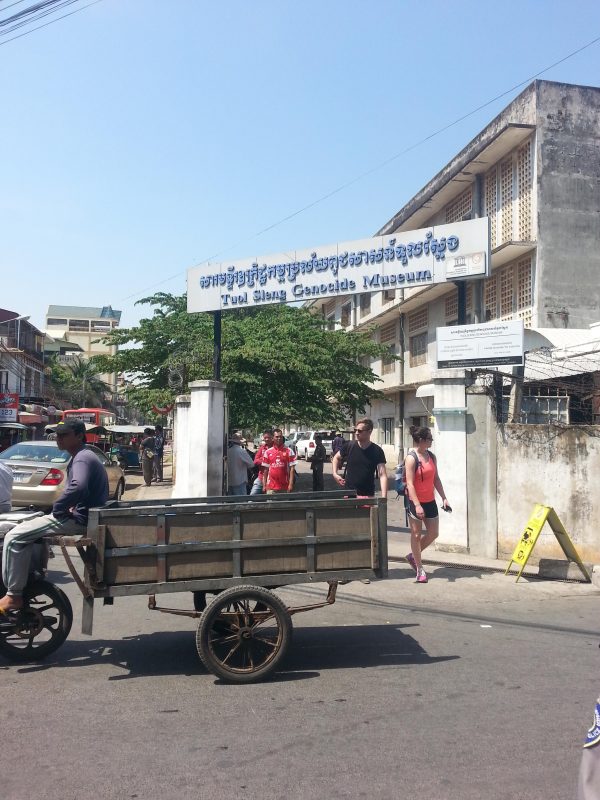
Visas for Cambodia
Entry into Cambodia requires a Tourist Visa for citizens of most countries outside of Southeast Asia. A Single entry 30 day Visa will do for most visitors. If you’re planning on a longer stay, consider either a 1 year multiple entry Business visa ($150-$180) or getting an extension for another month. Most travel agencies once inside Cambodia will offer a quick and easy Visa extension service. The Visa can be obtained one of three ways:
- Apply in person or by mail ($30-35 USD) at the Cambodian Embassy in your home country. The Visa is valid for 3 months from the date of issue for 30 days in Cambodia.
- Apply Online for an eVisa ($37 USD) through the Cambodian Ministry of Foreign Affairs,. Valid for 3 months from the date of issue for 30 days in Cambodia. This is similar to the Pre-Approval Letter for Vietnam, except it seems way more legitimate.
- Visa on Arrival (VOA) is obtainable at some border checkpoints in addition to the Phnom Penh and Siem Reap International Airports. Good for 30 days, single entry in Cambodia. Double check you have packed your Visa on Arrival Application Requirements:
**Note: Only the 30 days single entry visa is available for VOA and eVisa Applications. The eVisa is only accepted at the checkpoints listed below and may present a problem if you plan on entering from Loas.
Visa Requirements
- Passport or Passport Scan with 6 Months Remaining on your passport.
- Application Form
- 2 Standard issue Color Photograph taken in the last 12 months (Attach to email or print)
- Credit Card Form or Cheque in USD
- Prepaid Envelope with your Mailing address (For Mail Option)
- $35 USD for Visa processing fee
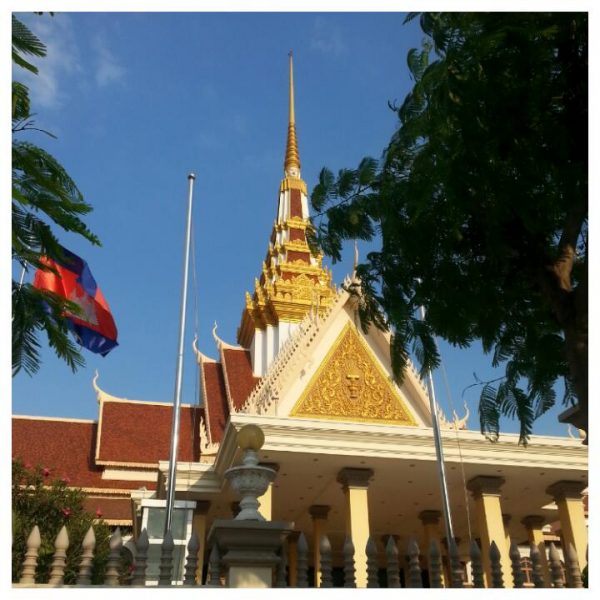
Using A Visa Service
Getting a Visa in Cambodia can be super easy or a huge hassle depending on how much time you have left before your departure and if you are looking for the lowest price. The alternative is simply to use VisaHQ Services.
It just makes things a lot easier and guaranteed. The benefit of using a Visa service is being able to have all your different Visas for multiple countries organized in one place and have professional advice should you need specialized service for non-tourist visas
Note: VisaHQ is an Affiliated Partner of Tallypack Travel, a commission from your order will go to support the blog!
VisaHQ is available for a lot of countries, check out our VisaHQ widget in the sidebar to check if you need a Visa for Cambodia(Down Below on Mobile)
The Geography – North & South
Cambodia is located in Southeast Asia bordered by Vietnam, Loas and Thailand. The landscape is characterized by fertile rolling plains and extensive waterways that serge in the monsoon season flowing down from the mountains to the North. Knowing when to visit Cambodia is especially important, the dry season from November to April being your safest bet. No need to pack much rain gear! However the flora springs to life at the end of the monsoon season in October offering the most colorful and picturesque scenery: Tonle Sap Lake is the primary feature of central Cambodia while islands and beaches define the coastal region.
The two most popular points of entry by land into Cambodia are from Bangkok to the West and from Saigon to the East.Border checkpoints are always a point of unease for me as my passport and entry are out of my hands. Honestly, it doesn’t hurt to look as dirty and poor as possible. If you are on the road a while this doesn’t take much effort, chances are you already need a shower. It is a good way to avoid being extorted for bribes or given higher quotes for Visa Applications. I’ve never had any trouble at a border crossing either from the guards, the government clerks or the bus companies. But, its just one of those things to be wary of when on the road. Therefore, this remains my first concern and point of anxiety.
Take a look at the map for some of the more popular travel destinations for your next trip!
Weather in Cambodia
Luckily Cambodia’s weather isn’t as complex as neighboring Vietnam. The country experiences two different seasons: Wet & Dry.
The wet season runs from May to September. The Dry season from October to April. Easy! For tourists, April, May and June offer the highest temperatures (35 degrees) and the best time of year to visit the beaches on the southern coast of Cambodia.
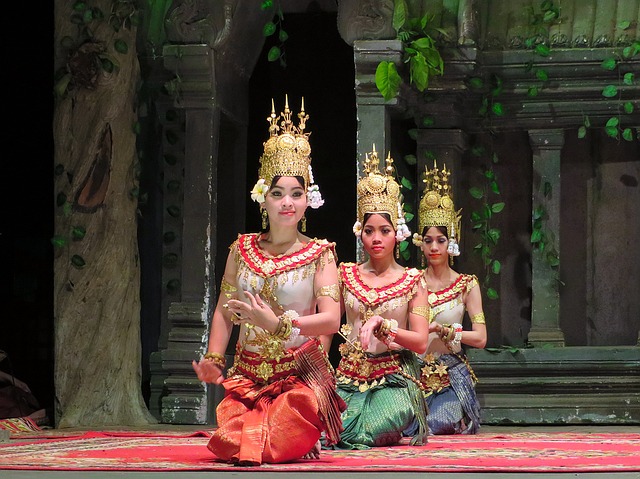
The dry season is dusty and you’ll find photos of Angkor dull until the rain comes back to bring life back into the forests and fill up the beautiful Tonle Sap Lake. That’s why October and November are also very popular, with the end of the rainy season comes cooler temperatures (25 degrees) and those stunning rice paddy and Angkor Photos!
Transportation
Cambodia can be awkward in terms of moving between the North and South. Its almost impossible not to double back through Phnom Penh, so don’t be too upset if you miss something on your first pass through the capital city. I took an overnight bus from Phnom Penh to Siem Reap in February 2016, unfortunately the seats only reclined as it wasn’t a sleeper but i didn’t care as they had a big TV at the front playing the newest James Bond Movie!!
Bus tickets can be booked online or purchased at your hotel or at an agency. Pleasantly, a free mini van ride is usually included from the hotel to the bus terminal… except sometimes they don’t show up and the hotel is forced to improvise. In fondness, I remember hoping on the back of a motorbike with my stuffed pack and holding on tightly to this tiny little Cambodian Woman around 20 years old.
My favorite resource for transportation is a great website called Seat61.com, check it out! I love it because I know it’s just a person who likes trains a lot and somehow turned it into the best transportation blog on the web.
Here is a quick summary of options in Cambodia:
- Bus $5-$25: Mekong Express – Capitol Bus – Giant Ibis – Phnom Penh Sorya
- Speed Boat $35: Available between Siem Reap and Phnom Penh – Caution to water levels!!
- Train $6-$7: Phnom Penh to Kampot, to Sihanoukville – New in 2016!
In 2016 Cambodia has revived train transportation! Currently, only the southern lines from Phnom Penh to Kampot and Sihanoukville are open. Apparently its a pleasant experience and very affordable from $6-$7/trip! I know a lot of travelers prefer the trains in Asia, so I encourage checking it out if you plan on venturing down to the south coast.
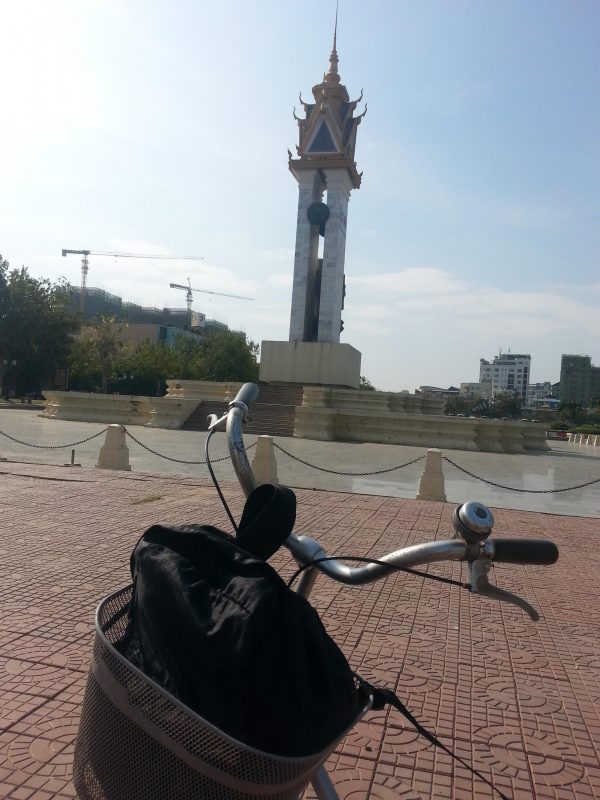
Basic Khmer Phrases
- Hello = Chom Reap Sour (Chom-reep-sore)
- Thank you =Arkun (Ar-koon)
- Sorry = Som Dtoh (som-toe)
- Goodbye = Chom Reap Lear (chom reep lear)
- No = Ot Teh (ot-tei)
- My Name is ___ = Knyom Chhmua ____ (knyom cham moo__)
- How Much? = Bo man (bow-man)
For a more complete list, we reference Culture Trip’s article
Khmer is a very difficult language to simply pick up, but the locals will appreciate that you are making the effort with some basic words and phrases! Consider picking up a language guide for all of South East Asia.
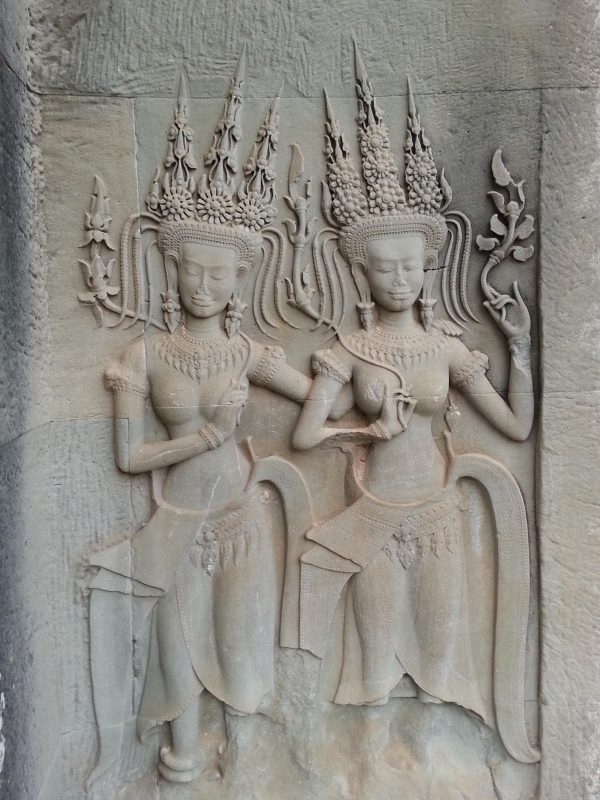
The History and Culture
Cambodia isn’t a country most people dream of visiting. Sure the Angkor Temples are beautiful and one of the most amazing ancient relics on earth but you can fly directly into Siam Reap and stay in luxury hotels the entire time, never experiencing the true Khmer culture.
The Khmer Empire lasted over 600 years from 802 to 1431 and built the 1200+ temples around Angkor Wat & Angkor Thom. Archeologist estimate that up to 1 million people lived on the flood plains of Cambodia around Angkor at the peak of the Empire’s power.
Today, 97% of the 15 million inhabitants are ethnic Khmer and they speak a language called Khmer. Historically, they have fought against the Siamese (Thai) and Vietnamese to maintain control of their territory.
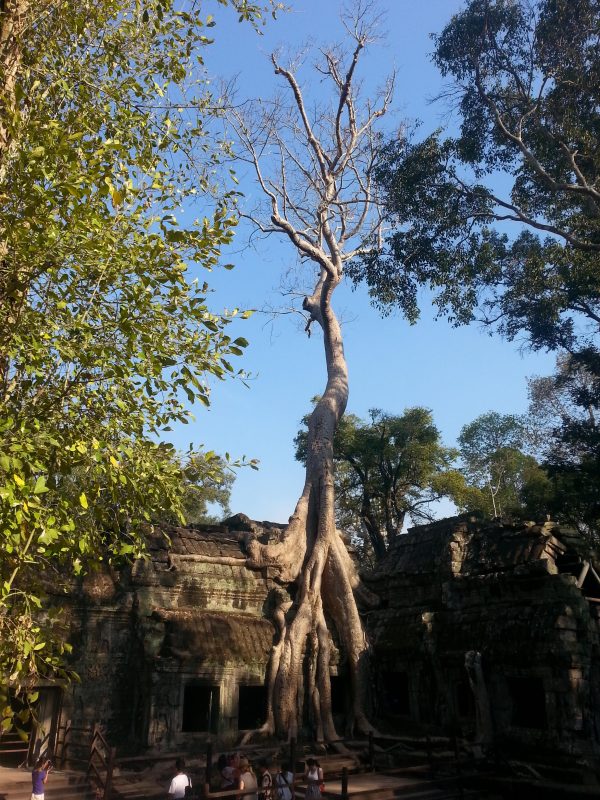
But in 1863 Cambodia became a protectorate of France and was swallowed up into the Indochine colony until 1953 when they gained independence.
Sadly, only 22 years later the country was plunged into darkness by the Khmer Rouge regime that was supported by the United Nation. The extreme political regime committed one of the worst genocides in modern history without most of the outside world even knowing it was happening. Estimates place the death toll at 25% of the population, 1.5 to 3 million people in only 4 years. The country was saved by the Vietnamese Army who had just won their own was against the United States only a few years earlier. Charges for war crimes are still being processed by the United Nations for key members of the Khmer Rouge regime.
One of the most wonderful experiences in Cambodia is being invited to a Khmer wedding, usually an evening reception. Check out this great article written on it on ‘Move to Cambodia‘
The Cambodian Economy
Understanding the recent modern history of Cambodia, the economy has come along way over the last 20 years. Since the year 2000, Cambodian purchasing power has increased four fold. Tourism has exploded from just 150,000 to over over 5.6 million! If you love Economic Impact reports like we do, check out Cambodia Tourism 2017.
Tourism contributes 3.6 billion to the Cambodian economy and over 25% of it’s GDP! With a lot more to come in the future!
Population: Unlike neighboring Thailand and Vietnam with 70 & 90 million inhabitants, Cambodia is pretty small with just over 15 million.
Sadly the genocide in the late 1970s is visible on the population curve.
Most of the farming is still done traditionally in Cambodia. Textiles and manufacturing also employ a large portion of the population.
Cambodia has a language/tour guide college that teaches many different languages like French, Mandarin, German and Spanish. So finding a tour guide in your native tongue for Angkor is very easy!
Education: One of the better economic indicators is the measurement of children who complete their schooling. So among kids of the same age, roughly 70% complete their last level of school in Cambodia.
Education is key to prosperity, if Cambodia will continue to grow in the future,they’ll need to increase this rate to a level comparable to neighboring Vietnam at 95%+